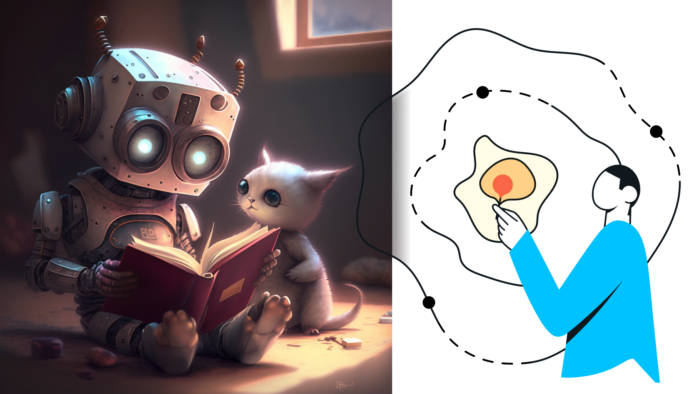Imagine that you run out of ideas to create a narrative for a game, for a client. Pretty embarrassing, huh? Sometimes, the white page haunts us; and yet, a deadline is coming dangerously close.
Fortunately, we’re in 2023, and a solution is getting easier and easier to use: Artificial intelligence, also known as AI.
Before I tell you how to set up the AI, I will give you a concrete use case.
An example: Let’s create a narrative for a game, for team-building
Imagine the following situation; for the next week, we need to come up with a story. This should follow these conditions:
- For a team-building game
- Politically correct
- A morale that shows the value of communication within a team
- Only animal characters
- 5 characters (as the number of players in a team)
So I asked Chatsonic this question:

His response is quite stunning actually. It took around a minute for the AI to generate all the words here. That’s something I would have taken an hour to do so (because I’d spend too much time hesitating between 10 different plots).

The story might not be exactly what we’re looking for. Is it a story for a Loquiz game? It isn’t. But then it belongs to us to adapt it in our game.
And that’s an important part of AI usage.
From the AI game narrative, let’s refine using our human mind
This new personified technology doesn’t replace us in our work. It rather acts like a big brain, with all the internet in its mind, ready to help us according to our questions.
Contrary to a human, it can’t exactly adapt to a given situation, or it can’t get proper feelings for whatever it does.
So now, let’s refine our 5 animals’ story with our human mind.
The story of the orienteering race and the 5 animals
- The game would be about a competition between a fox, a deer, a squirrel, a bear, and a rabbit.
- Instead of a race that involves speed… We can opt for an orienteering competition.
- From the very beginning. the characters have all different qualities and cons for orienteering, so different chances to win.
- The squirrel can climb trees fast to have a good view, the rabbit can dig holes to find clues, the deer can run fast, the fox can use its intelligence to solve riddles, and the bear can shoo off humans that’d block the path.
- In the end, they’d get a faster orienteering time together than if they were each of them on their own. This would all be possible thanks to good teamwork, and communication, rather than internal competition.
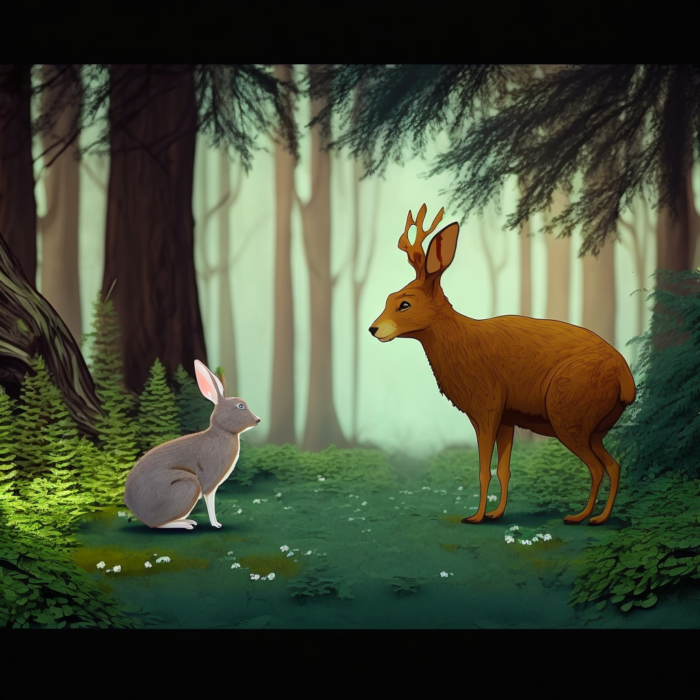
So here we have generated a story, then refined by ourselves.
That was an example of AI usage for your Loquiz game’s storytelling. Let’s reflect a bit on that,
A bit of reflection regarding the AI to create a narrative for a game
AI doesn’t replace your ability to create the perfect story for your game. However, it helps overcome the first big hurdle of a game creator: Laying down the first basis of the story for your client.
Indeed, there’s one difficulty among the storytellers. I realize this from my discussion with 2 storytellers (who are some of the bests in the corporate game industry):
It’s always tough to find a first idea when we have not so many requirements from the client. We always fear taking the wrong story choice that’d impact our future world. So we end up procrastinating so much.
As a side observation, they say it’s actually important to acknowledge as many conditions/limitations as possible from the clients, to make sure we reach their needs. These limitations are actually required to make a good prompt.
So instead of laying down the first bases ourselves, we can leave it to the AI. We must provide all the conditions/limitations. Then the AI will create a narrative for a game.
From there, we can refine it just like I did. That’s so much stress and procrastination removed!
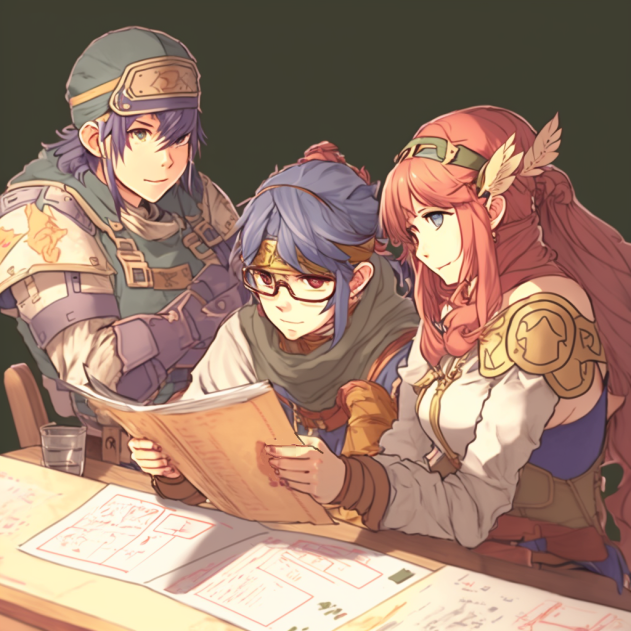
But then, how do we use this artificial intelligence, simply?
Setting up AI to create a narrative for a game, step by step
We all have in mind ChatGPT. But many of you came across this frustrating page:
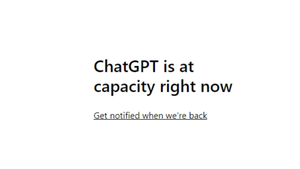
Access to ChatGPT is denied because of its intense traffic due to its sky-high popularity. Does that mean we can’t use a chat AI? No.
The good news is that many AI chats exist out there. This article explains it well.
Among them, after trying a few, my decision goes to ChatSonic.

ChatSonic might not have the fame of ChatGPT, but it has a more complete tool to adapt to your usage.
And the free trial still offers a lot of usages. If you don’t plan on using it every day, it will still fit your needs. Otherwise, you can check the pricing here.
After signing up, you will come to this chat:
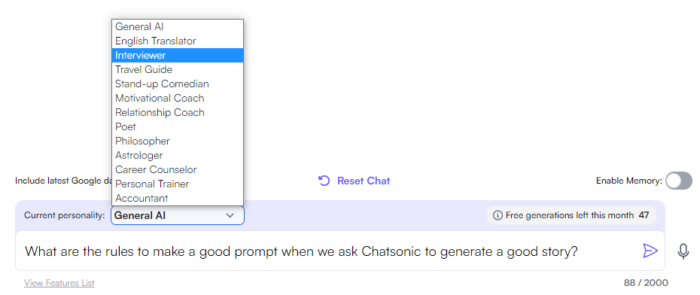
As you can see, you have the choice to adapt your AI according to your needs.
If you want an AI that is up to date, you can use the “General”. It will use Google results for its answers, meaning that answers will be more up-to-date.
If you want a story that’s more philosophical or motivational, these two options are available.
For the previous story about the 5 animals, I chose the motivational AI. And the results became pretty good for a corporate setup.
Once you’re at this step, it belongs to you to provide ChatSonic with the best prompt (i.e. the best short explanation text).
A few rules to follow to generate the best prompt:
- Offer context. Do you want to write a story for a corporate game? Tell it!
- Make sure you add all the conditions or restrictions required by the client (it’s important that the client gives you as many elements as possible)
- Be clear and concise. Some words have an open meaning, and can be subject to a surprising interpretation; e.g. “fantastic” “outstanding” or “great”.
- Make sure to include the key elements to focus on, such as a setting, characters, or any key plot points for example.
- Additionally, make sure to provide the desired length of the story and any specific tone or style you’d like ChatSonic to achieve.
And that’s all!
We wish you good luck in creating the best story! If you still have issues writing down a good story for your Loquiz game, feel free to get a demo with me by booking a time here.
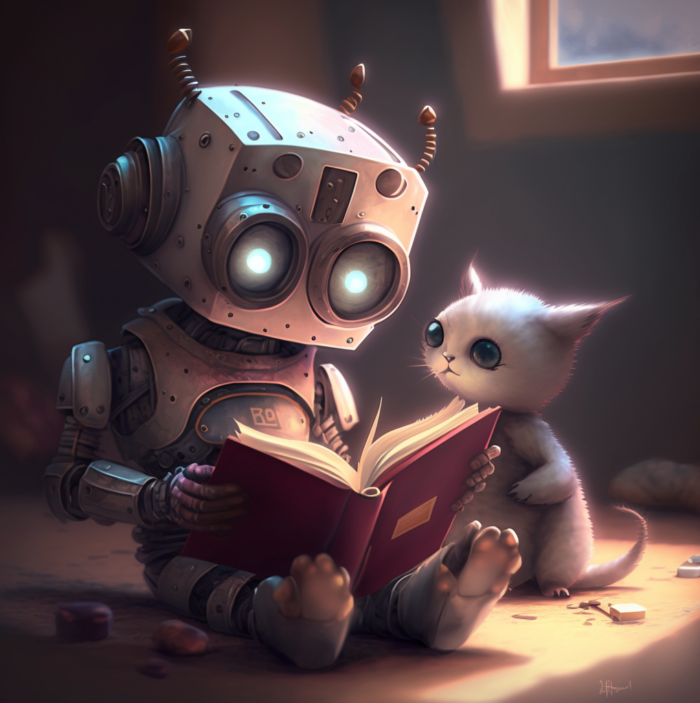
EDIT: Chatsonic is also experiencing some heavy load. It seems that AI in general became too popular. Indeed, there’s this message showing up on their website. 😅

Related stories
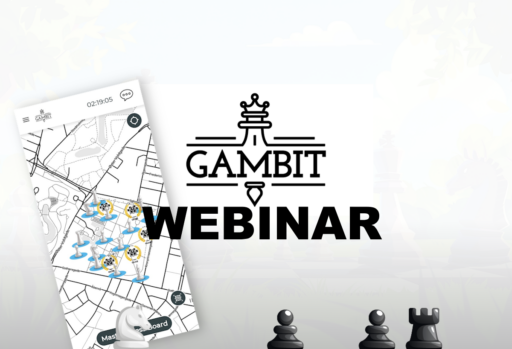
Are you looking for the perfect team-building activity? Look no further! We’re excited to introduce GAMBIT, a new team-building game...

Playing games is fun, but creating games is even better. What if you generate a profit from your own game...

I might surprise you with the following statement, but I consider that testing is even more important than development. Look...
Start free trial to bring your ideas to life
Sign up and create games, tours, team events and educational content that captures peoples' attention
Start from the scratch or use templates to kickstart!
